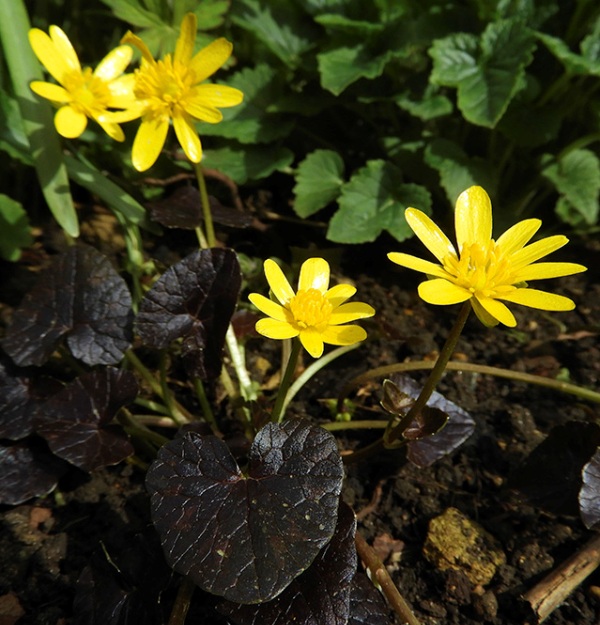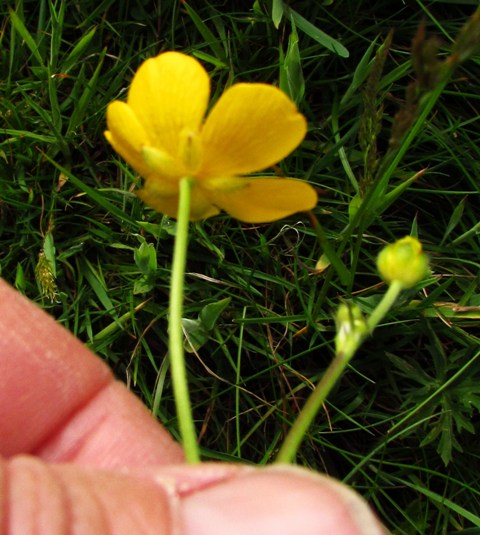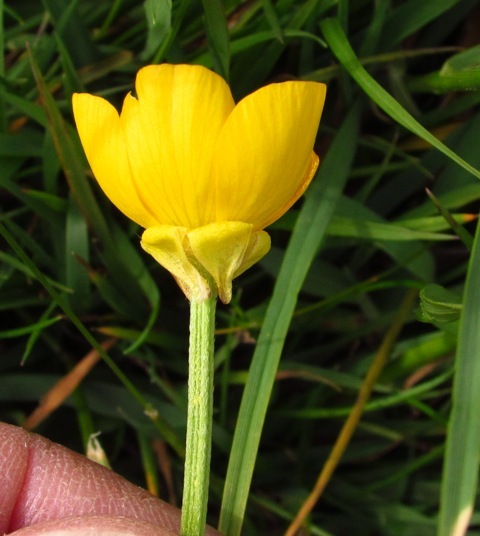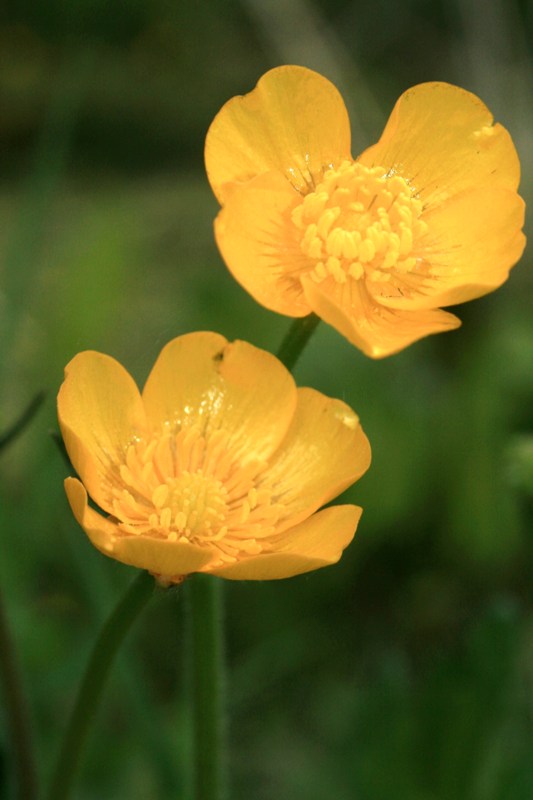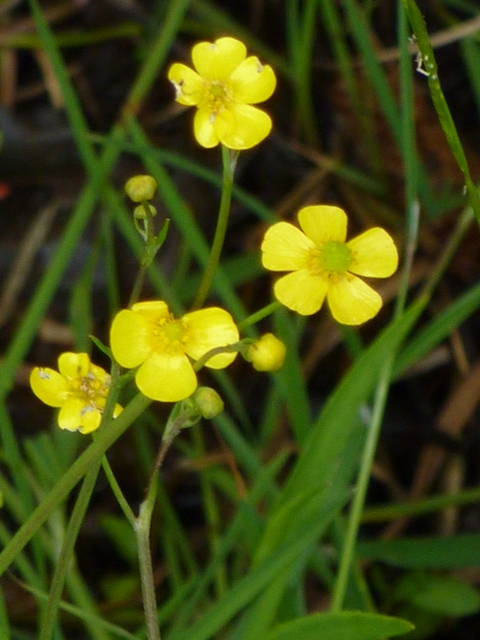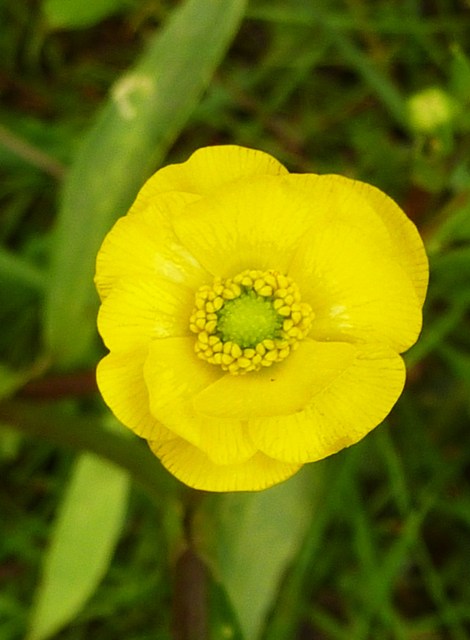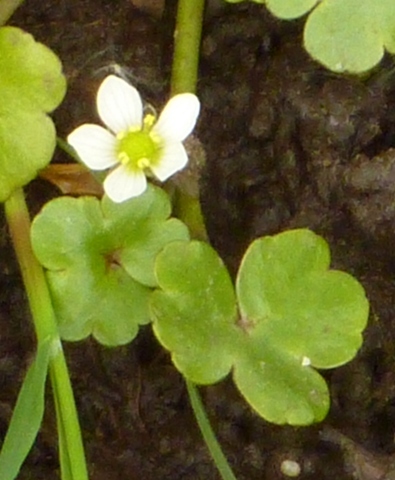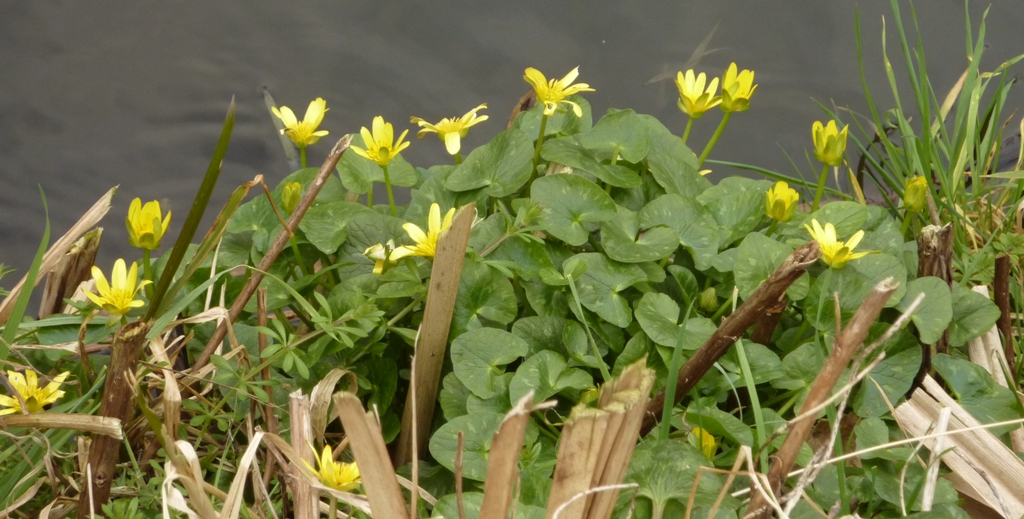
The Lesser Celandine or Ficaria verna (formerly known as Ranunculus ficaria) and the Creeping Buttercup or Ranunculus repens are both mentioned as being a weed on the RHS website.
This decided me to write about them as well as other members of this reasonably large family of the Buttercups or Ranunculaceae. It is a rather primitive family, with its simple flowers or only number 36 in Stace.
Pictures by Matt Summers unless stated otherwise.
Blue background is for interesting facts. Pink background for Medicinal Uses and Poisonous warnings and Green for all other uses.
If you fancy reading about growing some ornamental Ranunculus see here:
Ficaria verna is one cheery plant, which arrives very early in the year. Maybe not as early as the Colt’s-foot (Tussilago farfara), which is covered in an earlier post on Asteraceae, but often well before the official spring here in Britain.
Why people get annoyed with it, I do not know as it is not very long above the ground! It is disappeared by summer and other plants, except for maybe very delicate ones, can easily grow alongside it!
Maybe it is due to the fact that if it is growing in too shady or fertile conditions it will just produce lots of leaves?
If the common celandine is not appreciated enough there are also several cultivars (or the term ‘nativar’ can be used; see my earlier post) and varieties of this such as with double flowers or dark red foliage, contrasting nicely enough with the yellow flowers, especially admired in a nice container or on a rockery.
As a former Ranunculus it is the only one which is used as a medicinal plant although Barker, in The Med. Flora also mentions R. scleratus, R. acris and R. repens being used in the past externally as rubefacients and vesicants. Dried herb and the fresh herb in spring has been used as a vesicant. The fresh tubers were formerly applied to warts.
Note: never use any of the Ranunculaceae as medicine; leave this to the professional!! They are all poisonous in various degrees.
Toxicity:
All plants of the buttercup family (Ranunculaceae) contain a compound known as protoanemonin. When the plant is wounded, the unstable glucoside ranunculin turns into the toxin protoanemonin. Contact with damaged or crushed Ficaria leaves can cause itching, rashes or blistering on the skin or mucosa. Ingesting the toxin can cause nausea, vomiting, dizziness, spasms, or paralysis. In one case, a patient experienced acute hepatitis and jaundice when taking untreated lesser celandine extracts internally as an herbal remedy for haemorrhoids.
The plant is known as pilewort by some herbalists because it has historically been used to treat piles (haemorrhoids). Lesser celandine is still recommended in several “current” herbal guides for treatment of haemorrhoids by applying an ointment of raw leaves as a cream or lanolin to the affected area.
Supposedly, the knobbly tubers of the plant resemble piles, and according to the doctrine of signatures this resemblance suggests that pilewort could be used to cure piles.
Most guides today point out that medicines should be made from the dried herb or by heat extraction as the untreated plants and extracts will contain protoanemonin, a mild toxin.The plant has been widely used in Russia and is sold in most pharmacies as a dried herb. The protoanemonin found in fresh leaves is an irritant and mildly toxic but is suggested to have antibacterial properties if used externally.
Cooking of the plants also eliminates the toxicity of the plants and the plant has been incorporated in diets or herbal medicine after being dried, and ground for flour, or boiled and consumed as a vegetable.
Nicholas Culpepper (1616 – 1654), is claimed to have treated his daughter for ‘scrofula‘ (or Kings evil) with the plant.
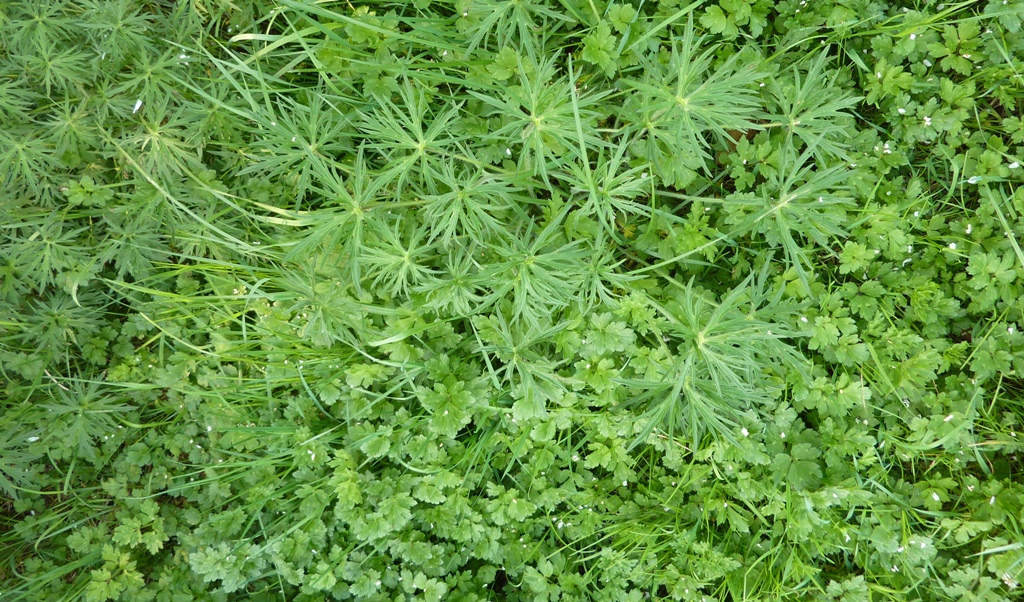
Ranunculus is also a large genus split into with 2 subgenera with 30 species, several subspecies and hybrids.
The plants growing on the land or true Buttercups and the Spearworts are mostly easy to identify but the Water-crowfoots, which grow in water are a lot more complicated as they vary a lot due “to factors such as the level or speed of water and possibly due to hybridisation” (Wild Flower Key by F. Rose)
The petals are often highly lustrous, especially in yellow species, owing to a special colouration mechanism: the petal’s upper surface is very smooth causing a mirror-like reflection.The flash aids in attracting pollinating insects and temperature regulation of the flower’s reproductive organs.
Buttercups usually flower in the spring, but flowers may be found throughout the summer, especially where the plants are growing as opportunistic colonizers, as in the case of garden weeds.
The name Ranunculus is Late Latin for “little frog”, the diminutive of rana. This probably refers to many species being found near water, like frogs.
The name buttercup may derive from a false belief that the plants give butter its characteristic yellow hue (in fact it is poisonous to cows and other livestock). A popular children’s game involves holding a buttercup up to the chin; a yellow reflection is supposed to indicate fondness for butter.
Toxicity for livestock:
All Ranunculus species are poisonous when eaten fresh, but their acrid taste and the blistering of the mouth caused by their poison means they are usually left uneaten. Poisoning in livestock can occur where buttercups are abundant in overgrazed fields where little other edible plant growth is left, and the animals eat them out of desperation. Symptoms of poisoning include bloody diarrhea, excessive salivation, colic, and severe blistering of the mouth, mucous membranes and gastrointestinal tract.
The toxins are degraded by drying, so hay containing dried buttercups is safe.
Wildlife benefits:
Most Ranunculaceae flowers are known for attracting bees and beneficial insects. It has nectar/pollen rich flowers.
Ranunculus species are used as food by the larvae of some Lepidoptera species including Hebrew Character and small angle shades.
Pictures of some native and non native Ranunculaceae found in Leicestershire and Rutland.
A list of other native Ranunculaceae with known medicinal and other uses.
- Helleborus foetidus (Stinking Hellebore) & H. viridis (Green Hellebore)
- Aconitum napellus (Monk’s-hood or Aconite) very rarely found in parts of SW England and S. Wales or as a garden escape. “This is probably the most dangerous wild plant to grow in Europe! The lethal dose of the alkaloids responsible for central nervous system paralysis is extremely small.”
- Anemone nemorosa (Wood Anemone) is a lovely early woodland flower in deciduous woodland. The fresh plant is certainly rubefacient, even vesicant.
- Pulsatilla vulgaris or Pasqueflower is a very rare but beautiful plant to admire on a rockery. It has medicinal uses for which the dried aerial parts are used. Action is Sedative, Analgesic and Spasmolytic. Uses: Spasmodic dysmenerrhoea. Pain in testicels, epididymus, etc. Ovarian pain. Hyperactive states. Grief. Drops of tincture into ear for earache. Useful in the management of migraine.
- Clematis vitalba (Traveller’s Joy, due to fragrant, white clusters of starry flowers in summer or Old Man’s Beard when seen in winter with the persistent hairy styles which hang out of trees and bushes, beard-like and hoary). The leaves have been used externally as an analgesic for local application to sciatica and intercostal neuralgia. However, the plant is also vesicant and may produce very nasty blisters. Leclerc tells the story of a soldier’s attempt to blister his legs so as to dodge service; the plant failed him in this respect but cured his longstanding sciatica! Attractive climber for the wildlife garden!
- Myosorus minimus (Mousetail) is a rare plant in Southern England and mentioned only by Renaissance herbalists as garden escape and is like Lesser Celandine or Pilewort high in Vitamin C and so was used against scurvy. Culpeper, of course, cannot refrain from recommending it; but he, like Pliny, the other great enthusiast, doesn’t trouble our minds or his with rumours about the plant’s undeniable poisenous nature.
- Thalictrum flavum (lesser Meadow-rue) Found rarely in damp conditions. In folk medicine, the herb, roots and flowers have been used as a diuretic and also recommended both internally and externally for skin disorders. Other species of Thalictrum are used in the Ukraine, in Siberia and in Tibet for these and other purposes.
- Adonis annua or Pheasant’s-Eye is a rare but beautiful archaeophyte.
- Caltha palustris or Marsh-marigold is a beautiful early flowering bog plant.
- Trollius europaeus or Globeflower is a beautiful ornamental for damp places.
Other uses of non native Ranunculaceae
Some Ranunculaceae are used as herbal medicines because of their alkaloids and glycosides, such as Hydrastis canadensis (goldenseal), whose root is used as a tonic. More than 30 species are used in homeopathy, including Aconitum napellus, Cimicifuga racemosa, Clematis recta, Clematis virginiana, Hydrastis canadensis, Ranunculus bulbosus, Helleborus niger, Delphinium staphisagria, Pulsatilla nigricans.
Many genera are well known as cultivated flowers, such as: Aconitum (monkshood), Clematis, Consolida (larkspur), Delphinium, Helleborus (The Christmas rose), Trollius (globeflower).
The seeds of Nigella sativa are used as a spice in Indian and Middle Eastern cuisine.


